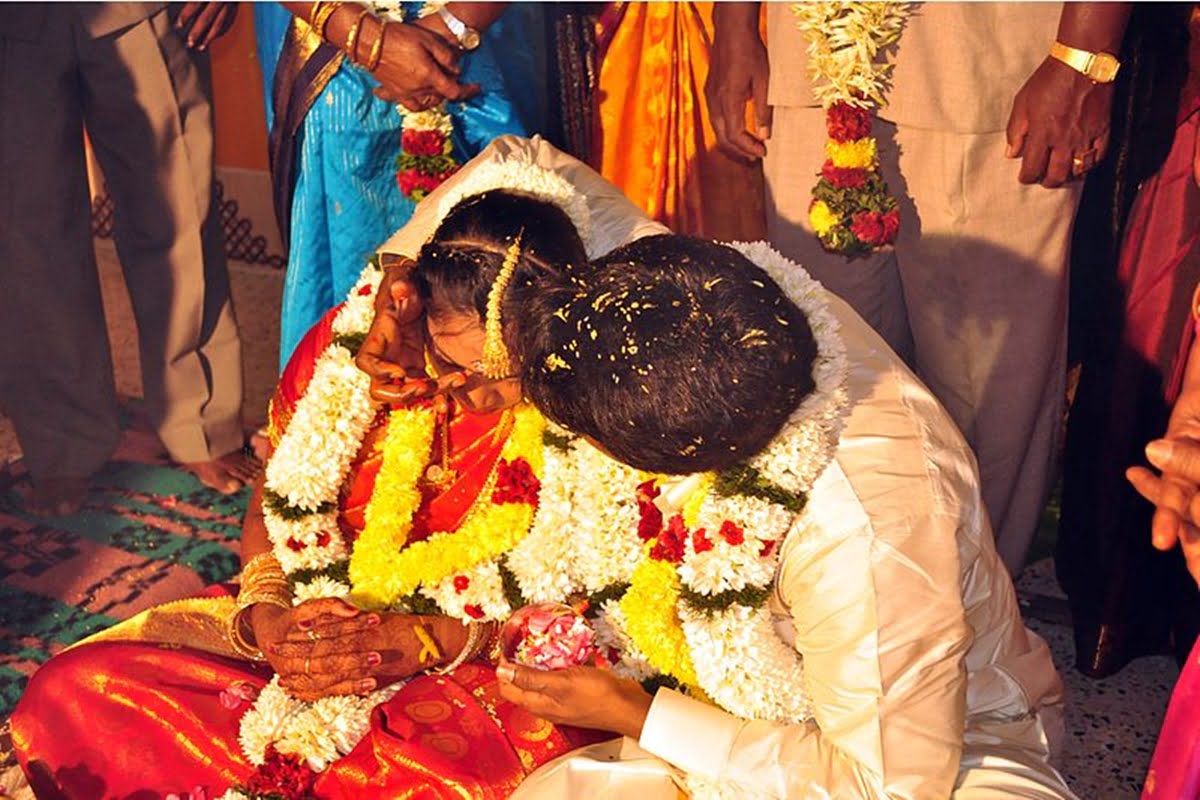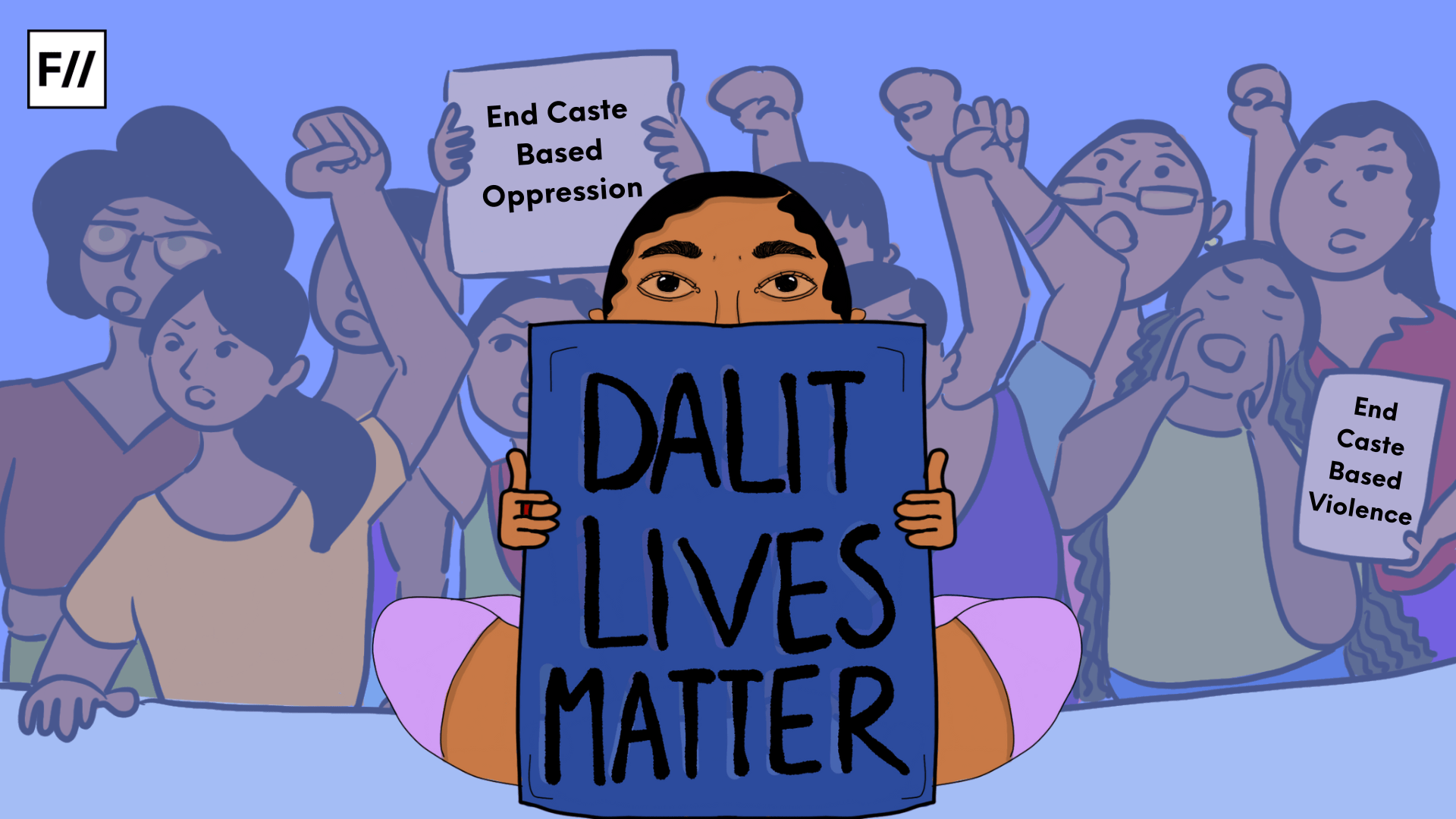Posted by Shivani Gual
When I look around my family and close relatives, I often find multiple family relations between two people. My father’s sister married a man whose sister married my mother’s brother. You might need a pen and a paper to figure that one out! What I intend to communicate here is that in small communities marriages among relatives is a common affair. This is known as endogamy.
Endogamous marriages are the ones that take place within a particular social group such as caste, clan, tribe, gotra, etc. The presence of thousands of castes and communities in India has led to the formation of a very fragmented and dissociated society. These castes, even though belonging to the same religion, are so different from each other that it is laborious to find similarities in their customs and traditions. As a result, marriages are found to be conventionally more successful when they are endogamous due to the familiarity between the two cultures.
Also read: Endogamous Love: On Love Jihad & Marriages In India
Endogamous marriages are the ones that take place within a particular social group such as caste, clan, tribe, gotra, etc. The presence of thousands of castes and communities in India has led to the formation of a very fragmented and dissociated society.
One of the most common endogamous groups is caste. Caste-system in India is primordial and it was first mentioned in Rig Veda, the oldest Hindu shastra. This division that varna-system created has lost its muscle today but the notion and attitudes remain in the minds of people. Every caste has its sub-castes and an imperceptible hierarchy exists which results in the formation of new endogamous groups. Due to the presence of a strong caste system in India, inter-caste marriages are overtly avoided even today.
The social and cultural gap between different endogamous groups is so significant that marriages among them are believed to destabilise and dismantle the society. Consequently, the choices for marriage unions are limited and restricted to the core primary group. When members of this group mate and have children, it is often found that these children suffer from genetic imperfections that their ancestors might have possessed. Inbreeding is one of the reasons for these ‘hereditary diseases’.
Inbreeding is a phenomenon where two close relatives mate with each other. While there is a huge demand for inbreeding in animals such as dogs and cows for various reasons, it is a taboo in many human societies. Inbreeding is infamous as it results in sub-optimal heritable attributes in the inbred offspring. When a child inherits a pair of recessive genes, one from each parent, it becomes dominant even though it might have been inactive in the parent. The chances of a recessive gene being present in close relatives are higher and therefore it is more likely that an inbred child will have a genetic disease.
In our fragmented society, there are over 4000 castes and communities, some of which comprise only a few hundred people. When a group of people indulges in marriage unions through generations, it results in an aggregated gene pool due to the absence of diversity. This limited gene pool is often responsible for the transmission of recessive genes from one generation to another creating a risk of chromosomal, genetic, or congenital abnormalities.
There have been several studies to identify the pattern of diseases in consanguineous families. In Bradford, which has the highest South Asian population in England, it was found that the children born to consanguineous couples are more at risk of genetic defects, congenital abnormalities, and infant mortality. Another peculiar example of inbreeding disorder as a result of endogamous coupling is the deformity in the jaws of Spanish Habsburg dynasty rulers. Due to the incessant inbreeding across generations, the lineage suffered from a host of health problems including infertility and a high mortality rate. The last ruler of the empire, Charles II, died at a young age of 38 years without leaving any immediate heir to the throne.
Indian castes, especially the ostracised ones, have lived in isolation for a very long time as a result of the ‘founder effect’. It occurs when a small group of people gets splintered off from the main population and forms a sub-population of its own. In other words, a few ancestors give rise to a large number of descendants.
A study conducted by Centre for Cellular and Molecular Biology(CCMB), through the analysis of socially and linguistically distinct populations from the Indian subcontinent, has found that over 25 percent of these groups show strong founder events. Precisely it means that these populations have a higher chance of receiving genetic disorders through their ancestors. Therefore, the communities which have been alienated for centuries due to the unfortunate existence of rigid caste-system have been exposed to the detrimental ill-effects of unintended inbreeding.
The Scheduled Castes and the Scheduled Tribes in India have had a history of oppression by the so-called upper castes since time immemorial. Even after seventy years of independence, many castes and tribes are bound by the chains of casteism and classism. Be it the incidents of honour killings in opposition to inter-caste marriages or the discrimination with ‘ex-criminal tribes’, the historical suppression is still intact.
Such ostracised communities live in a closed group where they share customs and rituals, their culture and traditions matching closely with each other. Therefore, caste-endogamous marriages or marriages between members of the same group are an obvious choice for unions. These unions, many of them being consanguineous, become an accelerator in the transmission of recessive genes through the generations. The implicit inbreeding and substandard lifestyle, with the absence of quality education and hygiene in these endogamous unions, has aggravated the plight of marginalized communities while coping with health-related issues.
Genetic counseling is a technique by which the potential side-effects of inbreeding can be mitigated. The couple can make an informed choice once they know the risk of genetic defects their offspring might carry. The family health history is used as a tool to draw conclusions about the successor’s genes. Gene testing is also one of the methods where genes from a foetus can be tested for diseases that can hamper the quality of its life ahead. All being said, these methods and techniques are nothing but a dream for any rural, impoverished family in India.
The SCs and STs have always been found to be at the bottom of all social groups when it comes to health indicators. Most of the women from these marginalised communities do not even have access to basic health facilities and supplements required during pregnancy. In those circumstances, it is imperative to construct a mechanism for the socio-economically underprivileged classes to have accessible resources for making informed choices where they are bound by cultural and social traditions of caste-endogamous marriages.
Having said that, it is just a temporary solution because the problem is way bigger than it appears to be. Even if the resources are available to find out the potential defects in an inbred child, there aren’t any significant solutions to cure that defect. In the end, it is just a mitigation process and not an elimination one.
The core problem lies in the fact that Indian society still prefers endogamous marriages over inter-caste, inter-class marriages which inhibits the biological aim of mating in evolution. Evolution relied on the idea of reshuffling of DNA across the human species. The early men who unknowingly practiced persistent inbreeding, as a result of a strong founder effect, were extinct after a few centuries. When societies create the social barrier amongst themselves in the name of upholding their culture and ‘purity of blood’ by dehumanising some sections of people, it not only disturbs the evolutionary process but also injures the ideology of liberty, fraternity, and equality.
he core problem lies in the fact that Indian society still prefers endogamous marriages over inter-caste, inter-class marriages which inhibits the biological aim of mating in evolution.
The benefits that the government provides to these disadvantaged groups in the name of positive discrimination cannot provide relief unless the social endosmosis occurs which requires the intermixture of genes and culture among the different castes and classes.
Dr. Ambedkar in his Annihilation of Caste mentions that according to him a real remedy for breaking the caste system is breaking away from endogamous unions and opting for inter-marriages, which is much more effective than abolishing sub-castes or pursuing inter-dining (the act of dining with members of other castes). Inter-marriage introduces cultural diffusion as it brings together families from distinct social and economical backgrounds thereby establishing a new fraternal relationship. Not only will the practice weaken the permeability of genetic diseases, but it will also liberate caste-ridden India in the long run.

Also read: Indian Matchmaking: Capitalising On The Arranged Marriage Market & Its Anxieties
This dream for a utopian Indian society—free from casteism and prejudices—is a far-fetched one. But this is one of the prerequisites for a quintessentially healthy population. The genomic study is crucial to identify genetic recessive diseases in various subpopulations across India. Once mapped, these results can be used in prenatal testing, genetic counseling, and screening, etc. thereby decreasing the burden on vulnerable communities. There aren’t many facilities available for genetic counseling in India as it is an expensive tool with inadequate research in the field.
However, this paves a way for the government, NGOs, and other private health networks to extend their support to the disadvantaged groups. Apart from this, the local governments, with the help of health workers, should play an active role in de-stigmatising inter-caste marriages and sensitising the communities by advising against close-kin and endogamous marriages.
Featured Image Source: Differencebetween.com





Brahmins daughter must marry other caste people to breakout such genetic human behavior in society tomorrow to come. Lets build a bright gene which was never before seen would change thought process intelecy among all indian society..
Great article Ms Shivani and well balanced too
You can’t compare marriage within same caste with marriage within family. There is a big difference and marrying in same caste doesn’t imply marrying a family member, don’t compare this culture with some western screw up.
Marrying within a family can’t be concluded as a western phenomenon. It happens in Islamic nations and also across many South Indian communities. For example, uncle-neice marriages. You have to dig deeper to understand how can one draw similarities between the two kind of marriages that you mentioned.
These marriages were more due to insecurity in old-age,Property protection and avoiding bifurcation nd misuse of property mostly hard-earned .These wouldn’t have arisen if above were taken care of….See present generation nd coming generations….in how many families elders are taken proper care by children or sons inlaws or daughters in laws or siblings…see how many feaudsters mismanaging properties and leaving people in old-age in lurch.
Young, progressive, educated and forward looking generation wants to reform Hindu society which is still in the grip of feudal, regressive and exploiting forces. Shivani Gual has explicitly explained the oppression, disgust and humiliation faced by marginalised section, tribes, clans in Hindu society. The oppressor is so dominant and of criminal mindset that it has not hesitated to force Endogamy on suppressed section of the society.
New generation wants Hindu society to become an egalitarian, homogeneous, compassionate and progressive. For which free dining and free marriage among the Hindu is must.
I congratulate young writer for her bold and courageous views. We wish to hear more from her.
Very well articulated in simple terms so everyone understands the issue and can spread awareness. Lovely ready and quite a different topic to read. Qudos to Shivani and feminism india to feature this.
You forgot to mention that Bradford is full of Pakistani Muslims who marry their first cousins. Hence, Muslims have a low IQ and health problems because of genetic inbreeding.